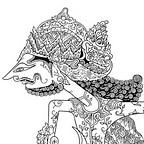Baltimore Basilica
A Photo-Essay on America’s First Roman Catholic Cathedral
Officially known as the Basilica of the National Shrine of the Assumption of the Blessed Virgin Mary, Baltimore Basilica was the first Roman Catholic Cathedral built in the United States. Designed in Neoclassical style by British-American architect Benjamin H. Latrobe (1764–1820), father of American architecture, its principal construction occurred during 1806–21. The edifice was initially blessed and opened in 1821, further consecrated in 1876, and elevated to Minor Basilica in 1937.
With the Cathedral of Mary Our Queen, the Basilica serves as co-cathedral of the Archdiocese of Baltimore, which was created in 1789 and is the Premier See of the Roman Catholic Church in the United States. This distinction does not denote any status of primacy, but is a recognition of the socio-historical importance of the Archdiocese to Church development in the country. The Archdiocese is one of five American Dioceses that have two churches serving as cathedrals in the same city, the others being the Dioceses of Honolulu, Burlington, and Brooklyn, as well as the Archdiocese of Anchorage.
The edifice has hosted many events pivotal to Roman Catholic formation in the United States, including seven Provincial Councils and three Plenary Councils. The Third Plenary Council in 1884 was the largest gathering of Catholic Bishops outside of Rome since the Council of Trent (1545–63) and produced the Baltimore Catechism, which was used in American Catholic schools from 1885 until the late 1960s. Also arising out of these meetings was the founding of the Catholic University of America in 1887, a pontifical university that is the only institution of higher education founded by the United States Conference of Catholic Bishops.
The Basilica underwent a $34 million dollar restoration that lasted 32 months and was completed in 2006, with an additional $3 million restoration occurring during 2011–2 in the aftermath of the East Coast earthquake. The earlier project saw original colors and designs restored, modern systems installed, and the gifting of the former stained glass windows to St. Louis parish in Clarksville. Furthermore, the Crypt was opened to the public and the new Chapel of Our Lady Seat of Wisdom was consecrated.
Although Maryland’s Roman Catholic population today is ironically lower than the national average, the history of Roman Catholics in the Thirteen Colonies-cum-United States is primordially tied to Maryland. Initiated in 1632 by Catholic convert George Calvert, Maryland was formalized by his son Cecil Calvert as a relative safe haven for Catholics from England. The population of Maryland did eventually feature a higher proportion of Catholics compared to other Colonies, but they remained a minority that still faced persecution.
Waves of violence from Puritan factions during Maryland’s early years compelled the House of Delegates to pass the Maryland Toleration Act, also known as the Act Concerning Religion, in 1649 that granted religious freedom to all Trinitarian Christians. However, in 1650 Puritans revolted against the proprietary government, sweeping Catholics out of the legislature and beginning an eight-year period of anti-Catholic persecution. Most of Maryland’s subsequent colonial history saw the Catholic community face alternating periods of relative tolerance and violent suppression.
As an emblem of Roman Catholic history in the United States, the Basilica serves as a vital reminder of the struggles for religious tolerance in the years before the adoption of the First Amendment. Even after the enshrining of religious liberty in the Constitution, the socio-political journeys of religious communities in the United States, including that of Catholics, have been defined by the self-awareness and vigilance necessary to ensure belonging and acceptance. In the realm of faith, the great challenge for any secular, pluralistic society is maintaining the balance between respecting the personal dimensions of religion while managing the communal passions that often arise from it.
These photos were taken on a single day exclusively utilizing a wide angle lens. The narrative and photos in this exposition capture only fractions of the history and artifacts on display, more of which can be viewed via the Basilica’s elaborate Virtual Tour.
